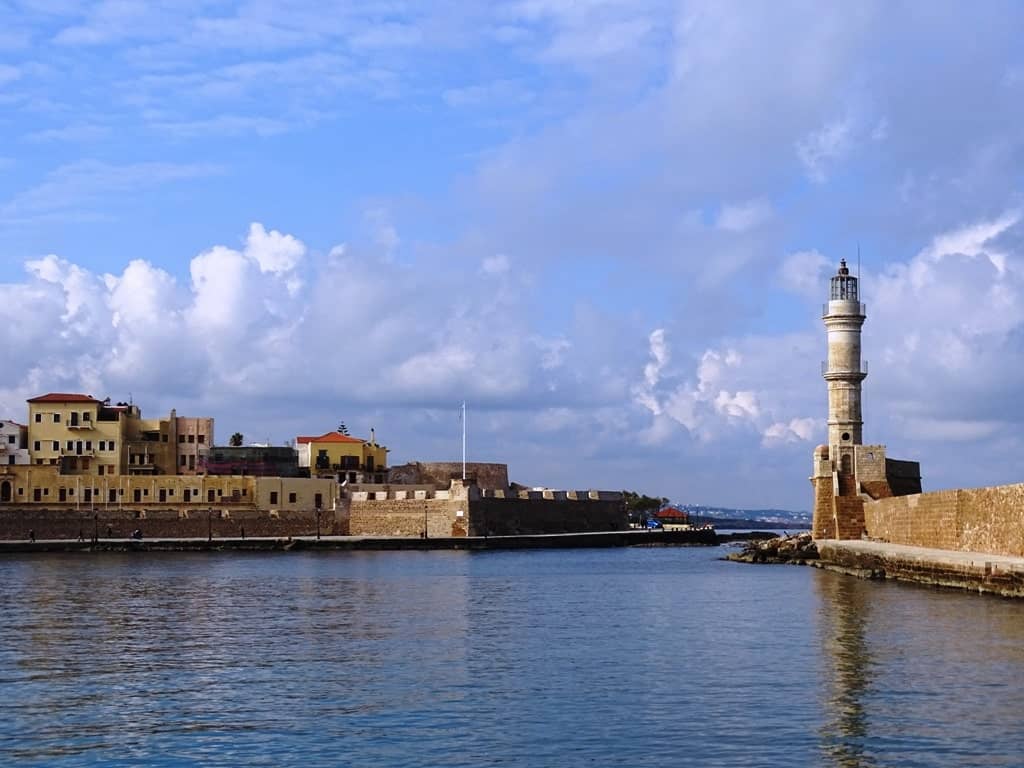The largest and the most southern, Crete has better weather for longer and, due to that, the longest-running tourist season compared with other Greek islands. The best time to visit Crete depends on what you want from a visit – Most people visit between April-October as this is when the tourism season runs with easier access due to direct flights, the busiest time being June-August, however, Winter shouldn’t be entirely overlooked if you want to enjoy the island as the locals do.

Disclaimer: This post contains affiliate links. This means that should you click on certain links, and then subsequently purchase a product, I will receive a small commission.
- When Is the Best Time to Travel to Crete?
- Crete Travel Seasons
- Average Temperature and Rainfall for Crete
- What Is The Best Month Of The Year To Visit Crete?
- Best Time to visit Crete for Good Weather and Swimming is June – September
- Best Time to go to Crete for budget travellers (April-May or October)
- The best time to travel to Crete for island hopping (May – Mid-September)
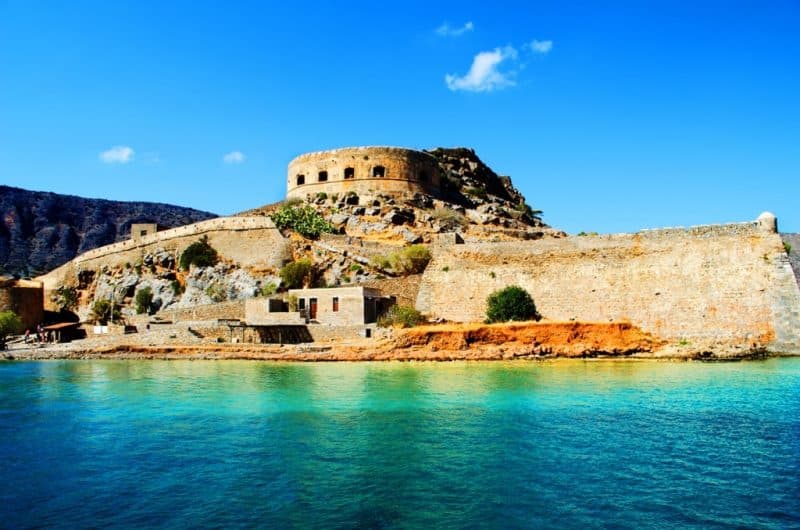
When Is the Best Time to Travel to Crete?
Crete Travel Seasons
High Season: June – mid-September
This is the busiest time on Crete with temperatures at their highest and the sea feeling like bathwater. Everything is open and in full swing with numerous flights and ferries arriving and departing daily, accommodation at its fullest (and priciest), and tavernas serving up dish after dish of Greek salad with plenty of shots of raki being downed too!
This time of year isn’t to everyone’s taste and can be too hot for anything other than lazing on the beach or by the pool during the day but if you want that traditional beach holiday with the family, now is the time to visit.
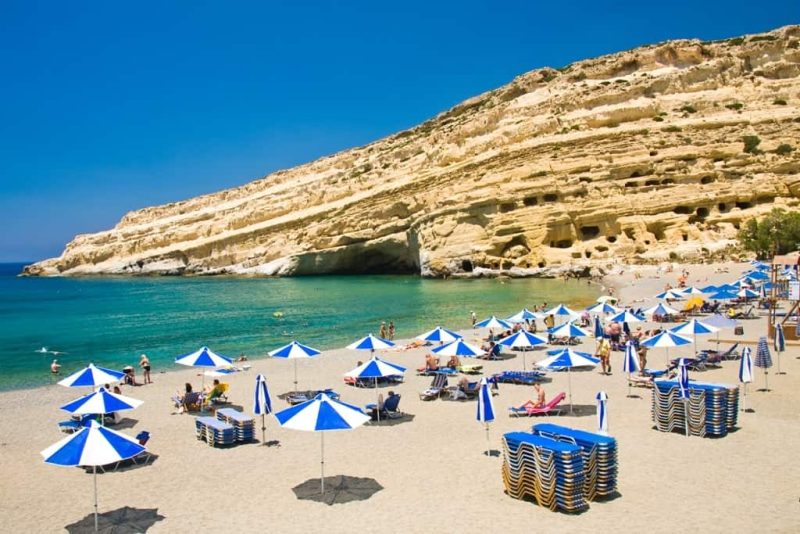
Shoulder Seasons: April-May and mid-September-October
Visting Crete at the start or end of the tourist season allows you to enjoy the island without the intensity of the Summer heat and without the intensity of people! Spring is ideal if you’re a nature-loving culture-vulture who likes things fairly peaceful – It’s an ideal time to hike, sightsee, soak up the incredible scenery whilst the island is still green from the Winter rain and enjoy the most picturesque beaches before the hoards descend.
April is too early to swim comfortably but it’s doable in May, especially towards the end of the month. If however, you want to explore all the coves and want plenty of snorkelling time, visit in September or even early October when the water has had time to warm up.
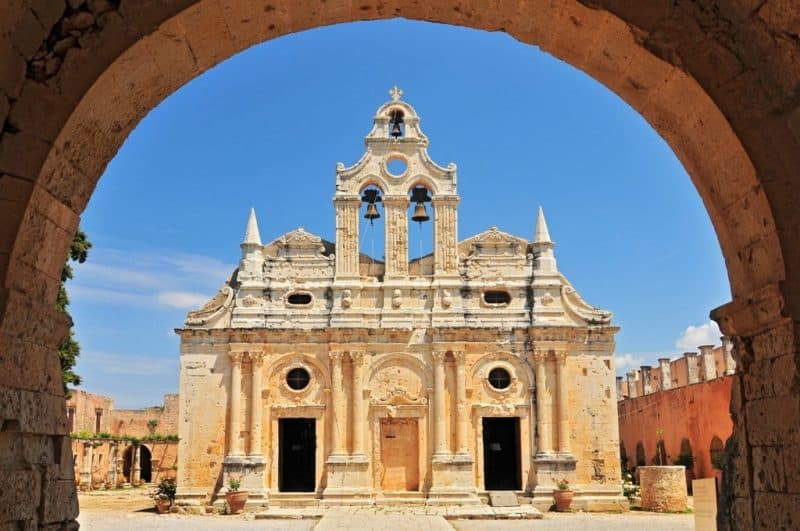
Off Season: November-March
Want to see how the locals live? Visit off-season when the resorts together with the tourist tavernas and tourist shops are closed. You’ll have to take a chance on the weather and pack boots, coasts, as well as lighter tops and trousers – each Winter being different with weather extremities in recent years including snow on the coast and flooding but unlike the smaller Greek islands where people depart for Athens over Winter, on Crete people remain year-round.
For ease of exploring you’ll need to hire a car as there are no excursions and the public buses run at a reduced frequency with the majority of tourist attractions such as Samaria Gorge and Spinalonga closed but Knossos is open all year along with all of the top museums in the cities plus of course, the beaches don’t close.
In fact, culture lovers can save tons of money by visiting off-season as the sites that do remain open have reduced ticket prices November-March, and on the first Sunday of the month (November-April), there’s free entry.
You might like: Best Things to Do in Crete
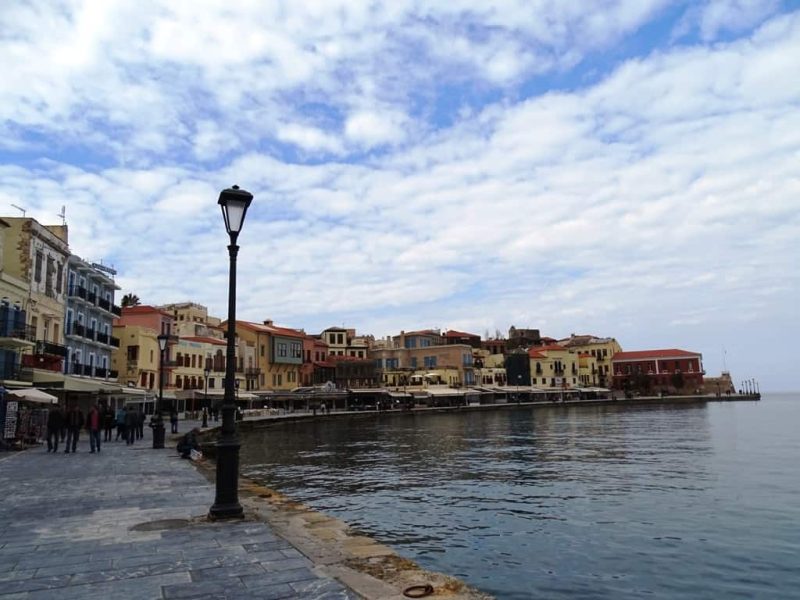
Average Temperature and Rainfall for Crete
| Month | Celcius High | Fahrenheit High | Celcius Low | Fahrenheit Low | Rainy days |
|---|---|---|---|---|---|
| January | 16℃ | 61℉ | 8℃ | 46℉ | 14 |
| February | 16℃ | 61℉ | 8℃ | 46℉ | 11 |
| March | 17℃ | 63℉ | 10℃ | 50℉ | 8 |
| April | 20℃ | 68℉ | 12℃ | 54℉ | 6 |
| May | 24℃ | 75℉ | 15℃ | 59℉ | 3 |
| June | 28℃ | 82℉ | 18℃ | 64℉ | 1 |
| July | 29℃ | 84℉ | 22℃ | 72℉ | 1 |
| August | 29℃ | 84℉ | 16℃ | 70℉ | 1 |
| September | 27℃ | 81℉ | 19℃ | 66℉ | 2 |
| October | 24℃ | 75℉ | 16℃ | 61℉ | 6 |
| November | 21℃ | 70℉ | 13℃ | 55℉ | 8 |
| December | 17℃ | 63℉ | 10℃ | 50℉ | 9 |
What Is The Best Month Of The Year To Visit Crete?
Personally, my favorite time of the year to visit Crete is in late Spring or early Autumn. April is lovely for sightseeing and hiking, the wildflowers are out, the sky a brilliant blue, and there’s a feeling of hope in the air with places open (especially after Easter) yet without the hoards of people.
It’s pleasantly warm rather than overpowering however, it’s too cold to swim. For swim time, the ideal time to visit Crete is in the middle of September but personally, I find it still a little too hot to comfortably sightsee, having to retreat inside for a siesta before venturing back out for sunset.
January in Crete
A quiet month after New Year celebrations are out of the way, January is usually a wet and/or cold month with daytime temperatures averaging 11c. Saying that, Crete is noticing the effects of global warming with unpredictable Winter – Snow is fairly common in the mountain villages (the White Mountains look extremely picturesque from the coast) and although it’s not unheard of snow falling on the coast, the weather can swing the other way providing highs of 14c.
Either way, visit Crete in January and you’ll see it from a local’s perspective with very few hotels open and all the touristy places closed. If you hit a bad weather spell it can feel a bit depressing but there’s enough to do if you stay in Heraklion, Chania, or Rethymno and enjoy museums, walking the backstreets, shopping, and sipping a hot drink whilst people-watching.
February in Crete
Traditionally the wettest month and one of the coldest too with temperatures averaging 12c, in recent years February has been rather unpredictable. It is still possible to get bright days where you can feel the sun on your face and enjoy the beginning of the almond blossom as you go out on hikes, but equally, it can be overcast and feel rather grim when the rain sets in.
The highlight of the month is Carnival with Rethymno putting on a must-see street parade with floats though do check dates as if Greek Easter falls late, carnival can take place up to the middle of March.
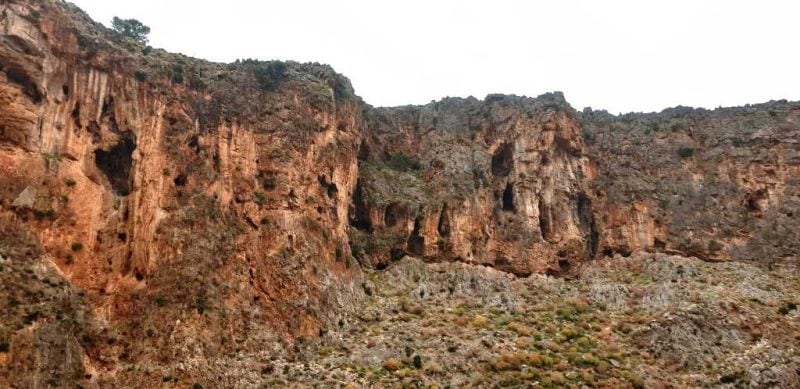
March in Crete
Spring is in the air in March with the wildflowers blooming but that saying about lambs and lions rings very true – The start of the month can either be ghastly or glorious and likewise for the end of the month, there’s just no telling, temperatures averaging 13c. Though still too cold to swim, this is still a beautiful time to visit if you dislike tourism and just want to enjoy the beauty and culture of Crete from road trips and hiking (Samaria Gorge is usually closed until May) to museums.
April in Crete
The perfect time for hiking, exploring, and generally relaxing – April in Crete is beautiful with the wildflowers, blue sky, and sunshine that’s pleasant rather than overpowering, with daytime temperatures reaching 15c. The seawater is still chilly at this time of year and although there’s less likelihood of rain than in earlier months, it’s best to check the weather forecast before you travel so that you can decide if a rain jacket is needed or not.
Depending on when Catholic Easter falls, you’ll find that tourist season will usually coincide with this, all the hotels, shops, and tavernas opening just ahead of the Easter school holidays. Check the calendar though as Greek Easter can fall on a different date – if it falls early it can be a great time to enjoy Greek culture before the tourist season arrives.
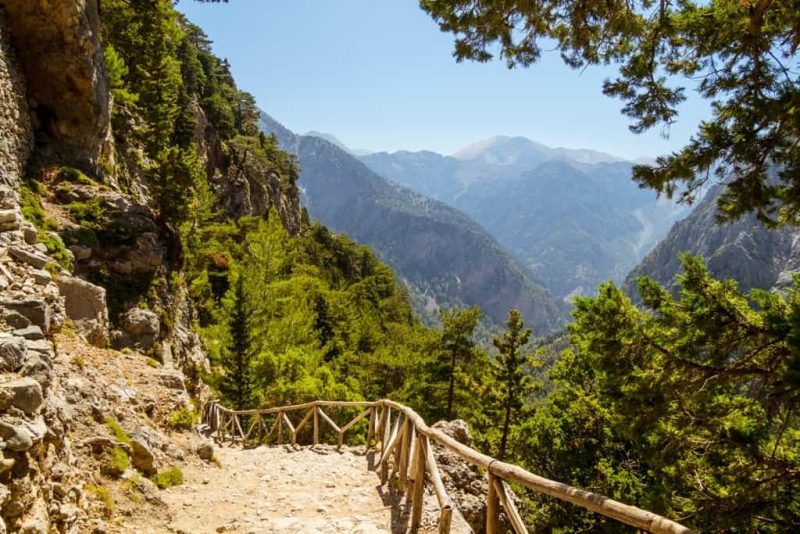
May in Crete
Officially the start of beach season, temperatures rise day-by-day throughout May hitting 24c with the sea temperature slowly rising through the month to 19c though you may still require a long-sleeved sweater for the evening as the drop to 15c can feel slightly on the chilly side after the glorious daytime temperatures.
Rain cannot be entirely ruled out, particularly at the start of the month but with the island now in full swing with all hotels, tours, shops, tavernas, and nightlife up and running and the ferry schedule increasing daily too, it’s impossible to be bored. This is a great time for couples and families who seek a sun holiday but without the intensity of the next few months both in terms of visitor numbers and heat.
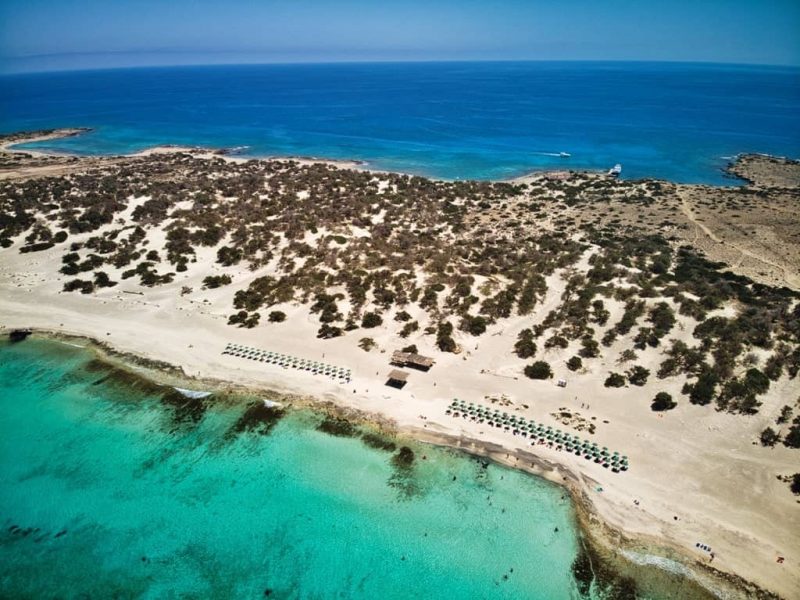
June in Crete
June means Crete is entering its high season with an influx of visitors, hotter temperatures, and that special holiday vibe though still not to the extremes of July-August. Sea temperatures are hitting 22c and daytime temperatures 24c with nighttime temperatures barely dropping so you won’t need the long sleeves anymore. The chance of rain has also vanished so all you need to decide is which beach to head to first!
Check out: The best beaches in Crete
July in Crete
The hottest month of the year with temperatures hitting 26c and above, July, together with August, is also the busiest month with families, couples, and party-goers flocking to Crete to get a sun-filled Summer holiday. Think of lazy days by the pool or on the beach then leisurely dinners followed by souvenir shopping and drinks once the sun has gone down.
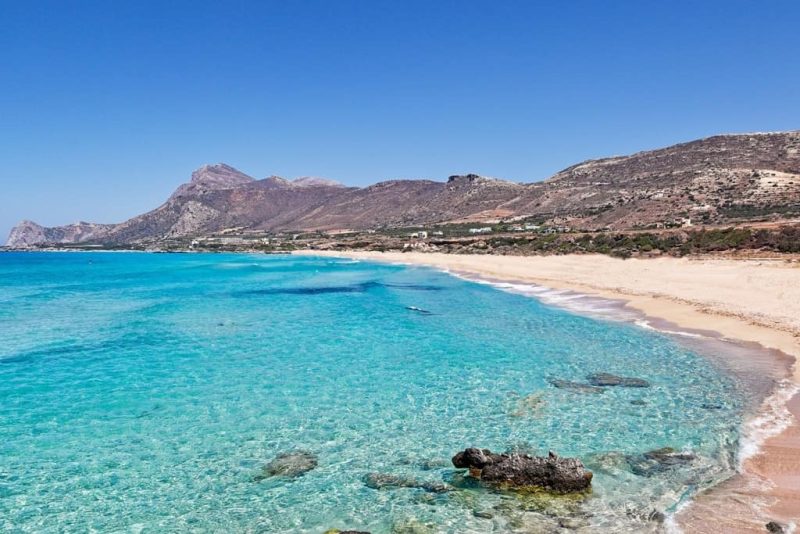
August in Crete
Together with July, this is the busiest time of the year and also the hottest at 24c and above – Perfect for sun holidays where all you want to do is move between pool, beach, and taverna – the sea temperature is now at its highest with water temperatures hitting 25c!
The most popular time for families, and party animals who head to Malia, as well as arriving and departing island hoppers, Crete is in full swing with a buzz in the air. You might be hard-pressed to secure a sun lounger at midday but the island is large enough to cope with the crowds so you never have that clogged-up feeling like in the backstreets of Santorini.
There’s a noticeable breeze in the air during the 2nd half of August which makes things a little less sticky but this breeze is nothing like the strong winds of Ios, Naxos, and Paros.
September in Crete
After the first week of September, once the kids have gone back to school, the craziness of Summer begins to calm down with fewer crowds – the middle-aged couples and retired people now taking over from the families and young party crowd.
The sea is beautifully balmy at 24c in September yet the intensity of the heat is beginning to die down with highs of 23c, night temperatures not dropping much below this either. It’s a great time of year to sunbathe, sightsee, and relax with island hopping still easy to do until the middle of the month after which the ferry schedule reduces.
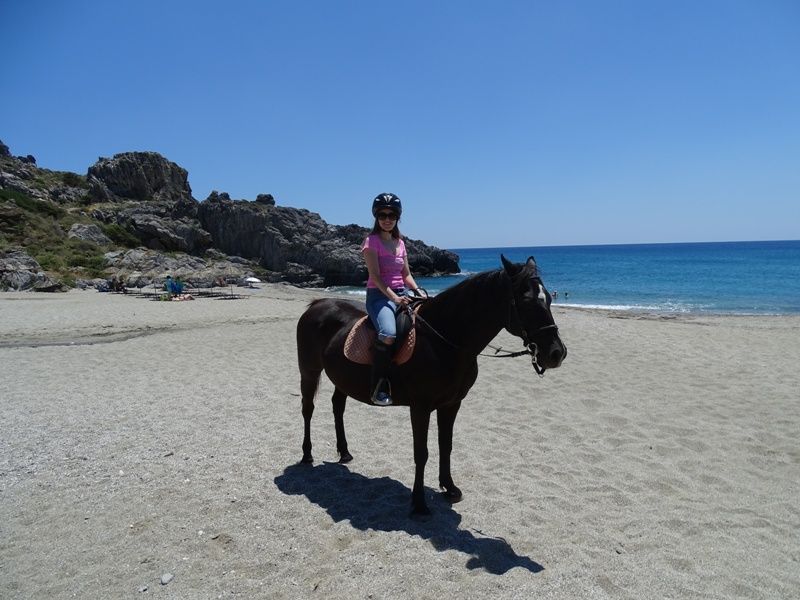
October in Crete
October in Crete still feels like Summer if you’re used to British weather though as the weeks go by temperatures do decrease and there’s more chance of wet or overcast days, perhaps a storm or two overnight. It’s a comfortable time of year to sightsee, hike, and get some last-minute sunshine into your bones before Winter takes hold back home.
Though it is still possible to swim, pool water is now on the chilly side with only the most determined still diving in but the sea temperatures are still at 23c with daytime temperatures hitting 24c and above. Ferry services decrease even more as many of the smaller Greek islands close for Winter by mid-October and as the weeks progress, the season on Crete slowly comes to an end too.
Most places usually stay open for the UK half term but you’ll begin to notice some items removed from the menu at tavernas, some hotels closed or getting ready to close, and the tours running less frequently – the exact date for shutdown depending on the individual business and on how many visitors are around.
If you stay in a city, you won’t notice closures quite but if staying in a resort, the last week of October can feel somewhat depressing as the shop fronts come down after the liveliness of Summer.
You might want to check out: Crete in October

November in Crete
Now out of season with ferries mostly going to Piraeus and flights via Athens, November takes on a relaxed vibe as the locals who work in the tourism sector breathe a sigh of relief that work is now over and they can relax with their families after the busy Summer months. November is the start of the municipal museum’s switching to reduced Winter prices with the first Sunday of every month (November-April) being free entry.
Outside, the whirr of olive harvesting machines can be heard with this being an ideal time to hike the many thousands of farmer’s tracks and the lesser-known gorges (Samaria Gorge usually closing October). Some rain is likely but for the most part, expect blue skies and sunshine – long sleeves and jeans may be needed but compared with London and Paris, it’s Spring-like weather! Expect daytime temperatures of 17c-21c and chilly nights, the temperature sometimes dropping to 10c overnight.
December in Crete
Traditionally one of the wettest months with 20 days of rain, December is rather unpredictable now, some Decembers feeling decidedly spring-like, others wet, grey, and rather depressing. Daytime temperatures range from 14c – 17c but it soon gets chilly once the sun goes down with temperatures dropping to 10c.
Although the Greeks will be wrapped up for Winter in boots and big coats at night, you might feel able to go out in a light jacket – just make sure your accommodation has heating as most properties are not built for the damp and cold weather, it often is warmer outside than in!
A generous scattering of snow is usually on the white mountains by the end of the month making for a festive feel, even if the skies are a brilliant blue with Christmas and New Year a time for family gatherings, the street decorations going up earlier each year and fireworks and gunfire a thing on New Year’s Eve.
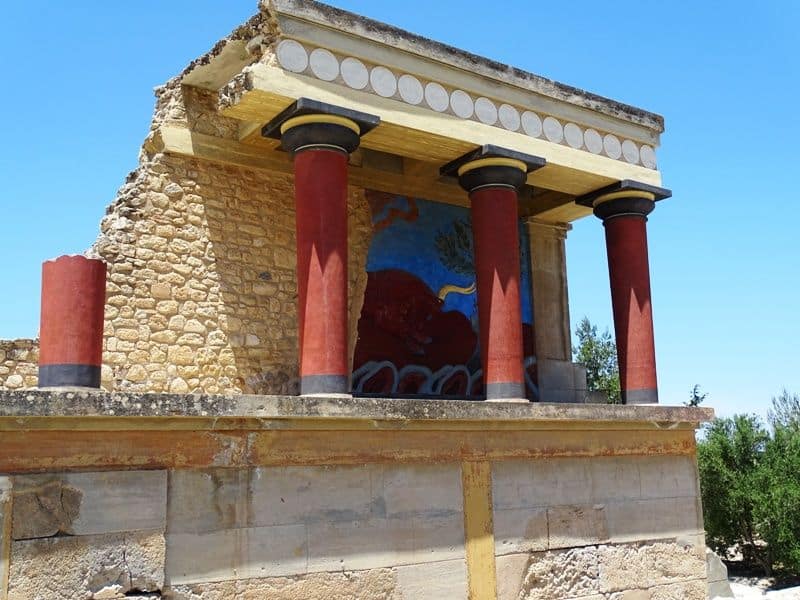
Best Time to visit Crete for Good Weather and Swimming is June – September
If you want a ‘traditional’ Summer vacation with plenty of sunbathing and swimming time, be that in the sea or in the pool, visit between June-September. In the second half of August, there is usually a refreshing breeze which helps take the edge off the heat compared with July. September is usually very pleasant too though climate change is making September slightly more unpredictable – you should expect the odd cooler overcast day, this might limit your sunbathing options for a morning or two.
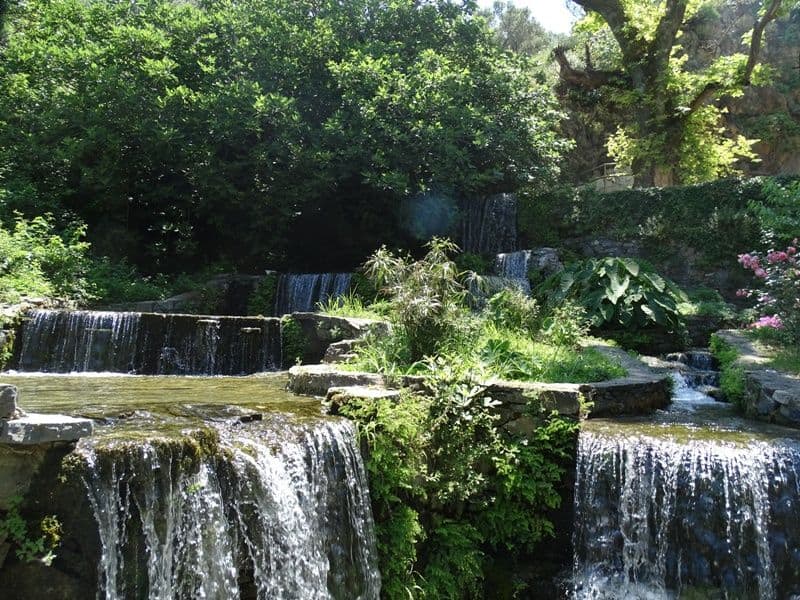
Best Time to go to Crete for budget travellers (April-May or October)
The start of the season or the end of the season are the best times to visit for budget travellers due to cheap direct flights – prices of 20.00-40.00 euro one way are common from London Gatwick. Add to this lower accommodation rates plus the possibility to snap up a bargain on car hire due to the limited number of visitors.
The best time to travel to Crete for island hopping (May – Mid-September)
Ferries to Piraeus, Santorini, Ios, Naxos, Paros, Mykonos, and other islands run at their most frequent between May and mid-September from the port of Heraklion with several options to choose from each day. From Rethymno, there is a ferry to/from Santorini once or twice a week and from Chania, there are 1-night ferries going to Piraeus. From Sitia, you reach the islands of Karpathos, Chalki, Anafi, Kasos, Milos, and Rhodes but on a less frequent schedule.
We hope this article has given you a better understanding of the best time to visit Crete – There’s no right or wrong answer, it just depends on your likes and dislikes. One thing’s for sure though, you won’t be visiting just once, this island gets hold of your heart quite like no other!

